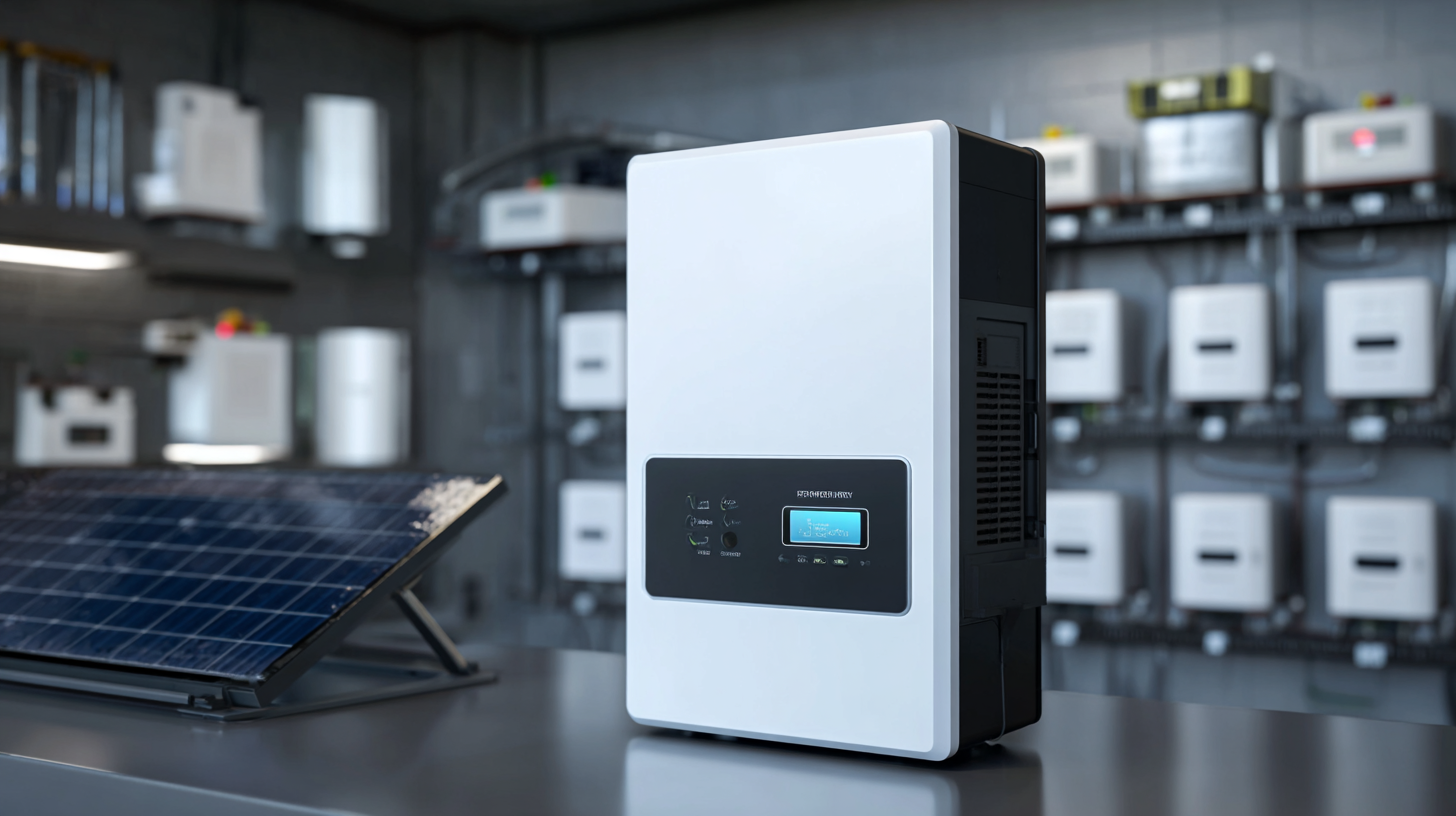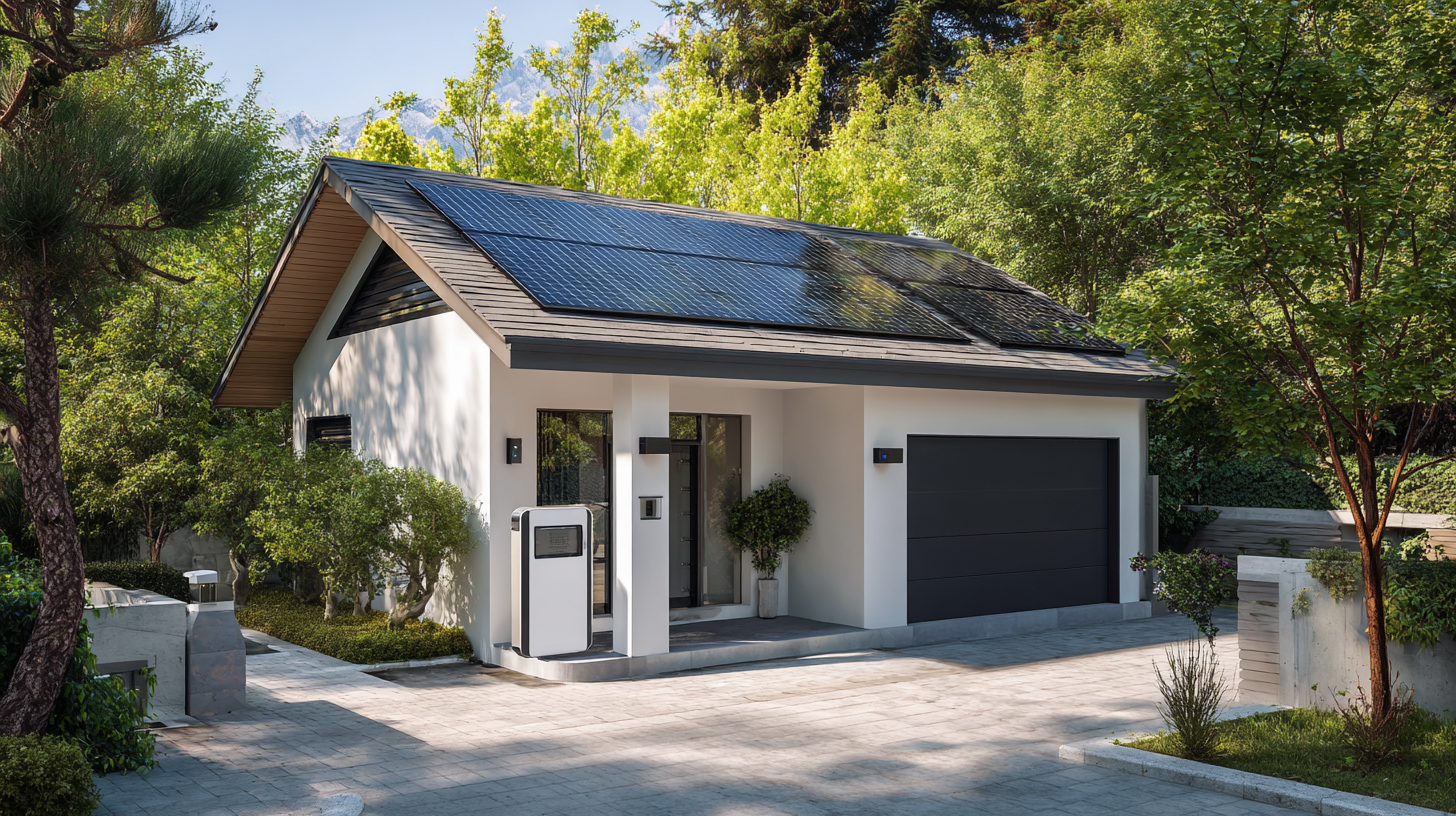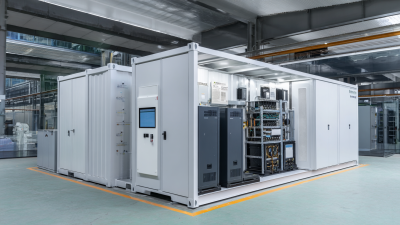Factory Tour
Unlocking the Future: How Household Energy Storage Batteries Can Reduce Your Energy Bills by Up to 70%
As the world increasingly shifts towards renewable energy sources, the importance of efficient energy management at the household level has never been more crucial. Household Energy Storage Batteries are at the forefront of this transition, offering a viable solution to reduce energy bills significantly—by up to 70%, according to recent industry reports. A study by the International Energy Agency (IEA) highlights that integrating energy storage systems can optimize energy consumption patterns, enabling homeowners to harness excess energy generated during peak production hours for later use. Furthermore, the U.S. Energy Information Administration (EIA) indicates that the adoption of household energy storage solutions is projected to grow by over 40% annually, reflecting an increasing consumer awareness of both energy costs and environmental impact. By unlocking the potential of Household Energy Storage Batteries, homeowners can gain greater control over their energy usage, leading to substantial savings and a sustainable energy future.

The Growing Demand for Energy Storage Solutions in Households
As the demand for energy storage solutions continues to surge in households, the market for smart home devices is witnessing significant growth across various segments. One of the key areas driving this trend is energy management, particularly with Vehicle-to-Home (V2H) power systems. According to recent market analysis, the V2H energy management systems are expected to grow from a value of approximately $93.58 million in 2024 to an impressive $532.59 million by 2032, reflecting a remarkable compound annual growth rate (CAGR) of 24.28%. This growth highlights how consumers are increasingly adopting renewable energy storage solutions to enhance their energy resilience and reduce bills.

In tandem with energy management, the smart home market is expanding to include various device categories such as HVAC systems, lighting control, and smart kitchen appliances. These devices not only contribute to energy efficiency but also integrate seamlessly with household energy storage batteries. The solar battery market is another notable segment, as it plays a crucial role in harnessing excess solar power for later use. Market reports anticipate continued advancements in solar storage systems, which will be essential for optimizing energy consumption in both grid-connected and off-grid scenarios. As households embrace these innovations, the prospect of reducing energy bills by up to 70% becomes increasingly attainable, paving the way for a more sustainable and financially sound energy future.
Understanding Household Energy Storage Battery Technology
Household energy storage battery technology has evolved significantly in recent years, enabling homeowners to maximize their energy efficiency and reduce monthly bills. According to a report from the International Energy Agency, the global energy storage market is projected to grow from approximately 13 GWh in 2020 to over 200 GWh by 2030. This surge reflects the increasing adoption of batteries in residential settings as a means of balancing energy supply and demand, particularly in regions dependent on intermittent renewable energy sources like solar and wind.
Battery systems, such as lithium-ion and flow batteries, offer homeowners the ability to store excess energy generated during peak production hours, typically from solar panels. A study by Bloomberg New Energy Finance indicates that households could save up to 70% on their energy bills by intelligently using stored energy during high-demand periods when electricity costs peak. Coupled with incentives from governments promoting renewable energy use, investing in household energy storage not only provides significant financial benefits but also contributes to a more sustainable energy ecosystem.
Unlocking the Future: How Household Energy Storage Batteries Can Reduce Your Energy Bills by Up to 70% - Understanding Household Energy Storage Battery Technology
| Battery Type | Capacity (kWh) | Cost ($) | Average Lifetime (Years) | Annual Savings (%) |
|---|---|---|---|---|
| Lithium-ion | 10 | 7,000 | 15 | 40 |
| Lead Acid | 5 | 3,000 | 5 | 20 |
| Nickel Cadmium | 8 | 5,500 | 10 | 30 |
| Flow Battery | 20 | 10,000 | 20 | 50 |
The Financial Benefits of Installing Energy Storage Batteries
The installation of household energy storage batteries can significantly decrease energy costs by harnessing excess power generated during peak production hours. According to a recent report by the International Renewable Energy Agency (IRENA), homes equipped with energy storage systems can save up to 70% on their electricity bills. This is primarily due to the ability to store energy and use it during peak loading hours when electricity rates often spike. As energy prices continue to rise, homeowners are increasingly recognizing the value of investing in such technology.
Tips for maximizing the financial benefits of energy storage include carefully assessing your energy usage patterns and opting for a system that aligns with your consumption habits. Additionally, take advantage of government incentives and rebates that may be available for energy storage installations. According to the U.S. Department of Energy, the average payback period for investing in energy storage systems can be as low as five years, especially in regions with high electricity costs.
Furthermore, the ability to participate in demand response programs can yield additional savings. Energy companies often provide financial incentives for homeowners who can reduce their energy usage during peak times. Data from the Rocky Mountain Institute indicates that participants in such programs can save an average of $400 annually by optimizing their energy consumption strategies alongside their storage solutions.
Unlocking the Future: Energy Storage Savings
This chart illustrates the potential reduction in monthly energy bills after installing a household energy storage battery system. Before the installation, the average monthly bill was $200. Post-installation, the average cost drops to $60, showcasing a significant potential saving of up to 70%.
Strategies for Maximizing Energy Savings with Storage Systems
To maximize energy savings with household energy storage systems, it is crucial to optimize the integration of renewable energy sources. By adjusting the capacity of Energy Storage Systems (ESS) and implementing Demand Side Management (DSM) strategies, homeowners can significantly reduce their energy bills. These strategies involve analyzing consumption patterns and aligning energy storage usage with periods of peak efficiency, enabling users to take advantage of lower energy costs during off-peak hours.
Investing in advanced technologies that monitor battery health and efficiency can further enhance energy savings. For instance, utilizing proprietary systems to assess the health and degradation of storage units ensures that energy is used efficiently over time. Additionally, exploring innovative methods to capture and harness excess energy, such as through regenerative braking systems or waste heat recovery in related systems, can contribute to substantial long-term gains. By implementing these strategies, households can not only achieve reduced energy costs but also play a larger role in promoting grid stability and sustainability.
Environmental Impact: How Batteries Contribute to a Sustainable Future
The transition to sustainable energy solutions is crucial for mitigating climate change, and household energy storage batteries play a significant role in this process. By storing excess energy generated from renewable sources such as solar and wind, these batteries allow homeowners to maximize their energy efficiency and reduce their reliance on fossil fuels. As a result, they not only contribute to lower energy bills but also decrease greenhouse gas emissions, making a positive environmental impact.

Moreover, the integration of energy storage systems into homes can facilitate a more resilient energy grid. During peak demand times, stored energy can be deployed, reducing the need for additional power generation from polluting sources. This shift toward decentralized energy production fosters a cleaner energy landscape and promotes the use of more sustainable practices. By choosing to invest in household energy storage, homeowners contribute to a collective effort in combating climate change while empowering themselves with lower energy costs and a more sustainable lifestyle.
Related Posts
-

Crafted Excellence: The Global Rise of China's Premier Wall-Mounted Energy Storage Solutions
-

Ways to Maximize Efficiency with Wall-Mounted Energy Storage Battery Solutions
-

Unleashing Global Confidence: Energy Storage Solutions from Premier Chinese Manufacturers
-

7 Essential Benefits of the Best Lifepo4 Energy Storage Battery for Global Buyers
-

China's Premium Manufacturing: Partnering Globally for the Best Lifepo4 Energy Storage Solutions
-

5 Tips to Maximize Efficiency with Your Wall Mounted Energy Storage Battery







